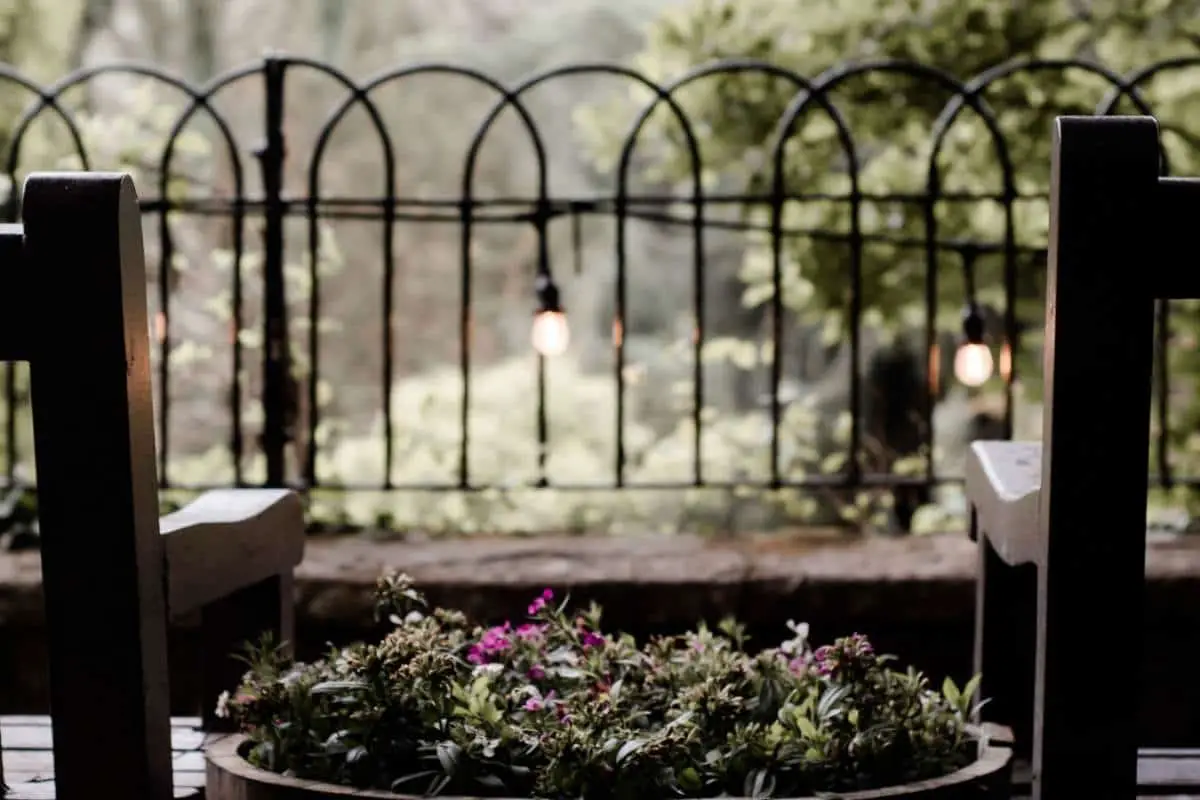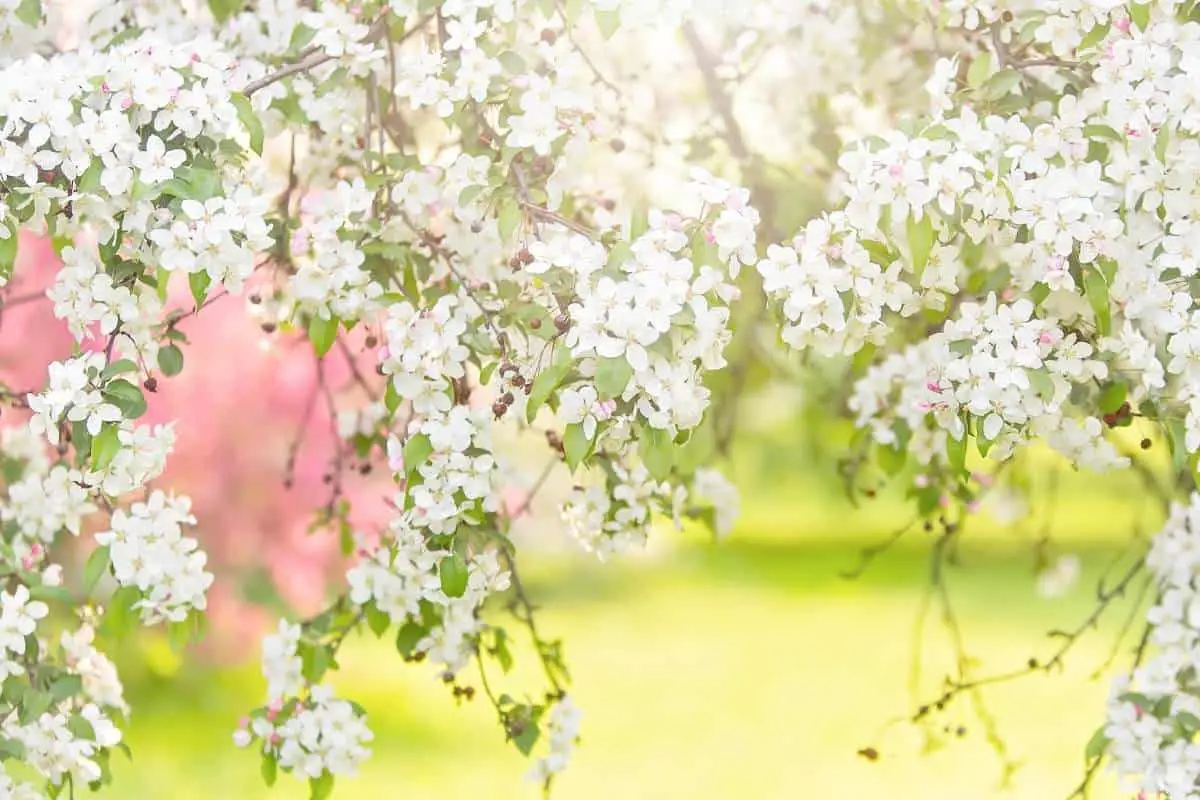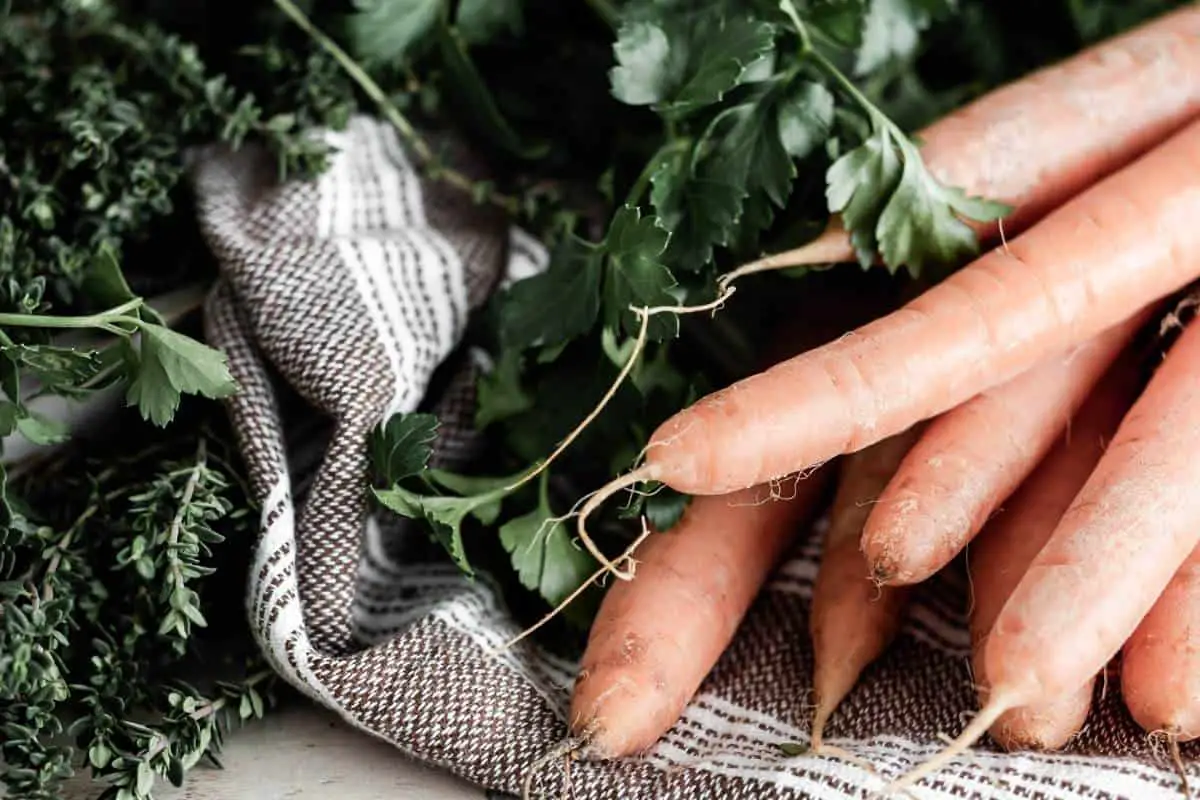Gardening sounds like a frugal hobby, and many people start it to save money. But it can quickly become expensive. There are many smart and frugal ways to save money while still enjoying a productive and beautiful garden.
Want to start a garden without spending a lot of money? Here’s how.

1. Start your own seedlings
Seedlings are expensive to buy but easy to start yourself. Just buy a few packs of seeds and germinate them in small pots or seedling trays filled with inexpensive seed starting mix.
2. Direct sow seeds when possible
Even easier than starting seedlings is planting seeds directly in the ground. Many things do best when direct-sown, which makes them both easy and affordable to grow. Here are some of the best plants that just require you to sprinkle some seeds to get started:
- radishes
- carrots
- sunflowers
- beans
- peas
3. Don’t be an organic snob
You can find organic seed packets and plants that are sold with a hefty markup. But this just means that they were raised organically as baby plants. Far more important is what you do with them when you bring them home. Don’t waste your money on organic seeds unless it’s very important to you.
4. Plant heirlooms (sometimes!)

Heirloom plants have some advantages and some flaws for the frugal garden.
Pro: You can save the seeds and replant them next year. They will grow true (meaning they will look like their parents).
Con: They can be less healthy and productive than hybrid plants, which are bred for vigor. This can lead to plants that don’t thrive and can waste money in the long run.
For most of us, the best solution is to plant a mixture of heirlooms and hybrids. I like to pick one or two heirloom tomato plants and flowers but plant hybrids for most other things.
5. Plant what you’ll actually eat
Don’t buy a packet of fennel or celery seeds just because it was cheap. Buying things you’ll never enjoy is just a waste of money, time, and garden space.
Of course, planting from seed saves money, but that doesn’t mean you should go crazy. A packet of seeds is not very expensive, but when you start buying them by the dozen they definitely add up in cost. Don’t be wasteful by buying things that “look interesting” that you know you’ll never use.
⭐️ Related: How to Stop Wasting So Much Food at Home
6. Don’t crowd your plants
It’s tempting to pack in your plants to save space and get to harvest more. But many frugal gardeners don’t realize that planting too closely together can reduce the output and quality of your harvest.
Each plant needs to get sunlight, air, and water. If you place too many plants in your garden, they are all competing for the same resources. This can lead to some of them withering away because they don’t get enough water.
Include several smaller plantings throughout the summer instead of one big planting later in the season.
7. Swap seeds with friends
One of the frugal gardening tips has to do with swapping seeds with friends. It’s a bit like bartering for goods, but instead, you swap garden seeds. If you keep good records and save your own seed from year to year, it can be pretty easy to make this work.
8. Make gardening friends
Now,, of course, to go swapping seeds with friends, you need friends who garden. And the benefits of having frugal gardening friends go beyond trading things. They will give you their used gardening tools, help you care for your garden when you need a hand, and give you free advice.
9. DIY insecticide
To avoid aphids and control plant diseases, you can spray the leaves of your plants with diluted laundry detergent or food oil, which will kill any aphids on contact.
Combining cayenne pepper, onion seeds, garlic, and water creates a cheap and chemical-free spray for aphids. Recycle a spray bottle from a store and use the mix to spread over the foliage of susceptible plants.
10. Try drip irrigation
Many frugal gardeners discover that drip irrigation is a much more frugal option than watering with hoses. It’s relatively inexpensive and easy to install. You can find kits at most home and garden stores that just twist into a hose and lay on the ground.
11. Use compost for free fertilizer
Compost is a frugal gardener’s best friend. For frugal gardeners, the key to using compost isn’t only about how you can save money on fertilizer but also how you can build healthier soil over time, which makes your garden less work and money to manage.
Making compost can be a complicated system of bins and filters, or it can be a pile of coffee grounds, food scraps, and newspaper in the corner of your yard.
12. Milk jugs for starting seeds and protecting seedlings
Instead of using store-bought seed starting kits, frugal gardeners use old milk jugs instead.
Here’s how it works: just cut the jugs in half, and you have a free cup for seedlings. The top half of the jug will also protect them from extreme weather and pests.
13. Use raised beds sparingly
Raised beds are popular, but they are expensive! It is much less to rent or borrow a garden tiller and plant an in-ground plot. Raised beds are lovely for plants that require good drainage, like herbs and strawberries. But to get enough surface area to really get a good harvest, a simple inground garden is the way to go.
14. Try straw bale gardening

Strawbale gardening is gaining in popularity with frugal gardeners. Straw makes an excellent, free base for those of us who love the idea of raised beds but can’t afford the supplies.
Straw bales are much more affordable than redwood or cedar planks, and they require less water. They have all the advantages of wooden raised beds like easier career, good drainage, and no-tilling.
15. Use rain barrels
Rain barrels are another frugal way to water your garden without spending any money. They can be bought cheaply at home hardware stores or online, and they store about 50 gallons of water. You can connect a basic hose or even a drip irrigation system to a rain barrel.
This will be especially effective in areas where water costs are high. For some people, it is more frugal to pay for water.
16. Be creative and reuse what you can
A lot of what we throw away can come in surprisingly handy in the garden.
Some things that seem like trash but that can be useful for frugal gardening:
- coffee grounds (tuck them right into the garden soil)
- old wooden spoons can be plant markers
- newspaper can be laid in garden rows to stop weeds
- egg cartons can be used as seedling cups
- clothing fabric can make cheap, frugal weed barriers
- protect your perennials with bubble wrap
But be careful here! There’s a fine line between being resourceful and just hoarding a lot of trash. Saving money in your garden isn’t just about gathering free or discounted equipment; it’s about minimizing waste and taking care of what you have.
18.Take advantage of the library
Libraries offer free gardening books and resources.
You can also access online databases, in some cases with free online courses, which will give you a lot of free advice.
Frugal gardening came from creativity
Frugal gardeners know that frugality doesn’t have to mean being cheap. It’s about finding ways to stretch your dollars so you can make sure this hobby is a money saver, not a money pit.
Many of these gardening tips have been around for years, but frugal people are just discovering them again.
